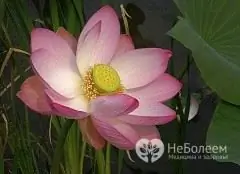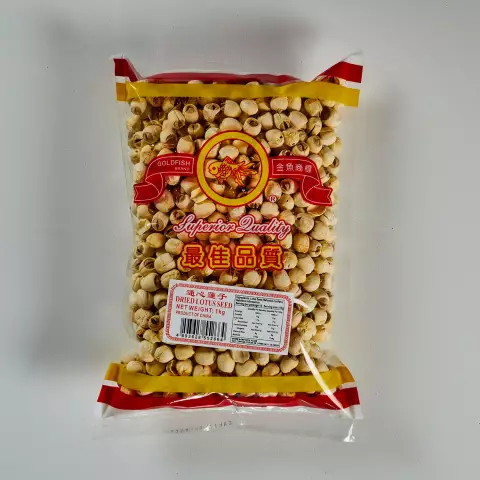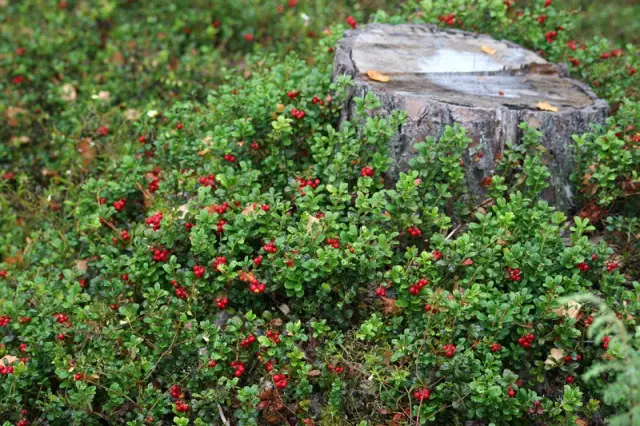- Author Rachel Wainwright [email protected].
- Public 2023-12-15 07:39.
- Last modified 2025-11-02 20:14.
Nut lotus
Instructions for use:
- 1. Feature
- 2. Application
- 3. Harm

The nut lotus is a perennial amphibian plant. The Russian interpretation of this plant sounds like "Komarov's lotus" or "Caspian lotus". The first description of the flower was given by Karl Linnaeus in 1753. Many eastern countries consider the lotus to be a sacred flower. The paintings of most of the English gods depict a white lotus, which symbolizes power. Even before Buddhism, people in China believed in the existence of paradise, it was identified with a reservoir and lotuses, each flower was the personification of a deceased soul.
Characteristic
In soft soil (very often it is under water) there is an oblong, branched, fleshy root that has a brown skin and a couple of straight leaves.
The nut lotus flowers belong to the upper part. They are found on a peduncle stem that has no leaves. The flower has a diameter of 25-30 cm and has a pleasant, weak scent.
Lotuses are available in lilac, yellow-pink and white-yellow hues. The leaves of the flower are large, their diameter reaches 70 cm. The buds bloom only in sunlight, and at night they close again. The seeds of a plant can be dark or light. The nut lotus is propagated by seeds. Most often it can be found in the Philippine Islands, on the island of Sri Lanka, in China, Japan, Indonesia, India, Iran, Australia, New Guinea, Vietnam, Azerbaijan. The lotus is grown artificially to decorate water bodies, as well as for medicinal and food purposes.
Application
For medicinal purposes, in cosmetology and in cooking, the stem, and roots, and flowers, and leaves, and seeds of the nut-bearing lotus are widely used.
It is believed that the lotus has a good refreshing, soothing, hemostatic, antipyretic, nourishing, antitoxic and diuretic effect. It is used in both traditional and folk medicine. It is most widely used in Arabic, Vietnamese, Indian and Tibetan medicine.
The roots and seeds of the plant can be used to treat diarrhea, liver, kidney and spleen diseases, dysentery, colitis, vitamin deficiency, pneumonia, insomnia, tachycardia, bronchial asthma, uterine and gastric bleeding, and wet dreams. This raw material can be used both cooked and raw. In addition, the leaves can form the basis of salads, and in combination with petroleum jelly will help with burns.

Raw seeds are high in vitamins, fats, proteins and carbohydrates. It is noted that the seeds contain thiamine, pantothenic acid, folic acid, pyridoxine, niacin equivalent. The seeds also contain a lot of mineral salts: magnesium, potassium, calcium, phosphorus, manganese, sodium, copper, zinc and iron.
The roots of the lotus nutritive contain carbohydrates, proteins, fats, dietary fiber and many vitamins.
To prepare a lotus decoction, pour 1.5 cups of water over a tablespoon of chopped roots. This mixture is boiled for 5-7 minutes on low heat, and then filtered after an hour of infusion. It is recommended to use such a decoction three times a day, half a glass before meals (10 minutes).
The lotus can also be used to make an effective ointment to help with burns. To make such an ointment, you need to fry the well-crushed leaves until black, and then mix with petroleum jelly. Apply the ointment to the affected area of the body while still warm, gentle rubbing movements.
Harm
Drugs containing lotus are contraindicated for chronic constipation. Also, the cause of various unpleasant consequences can be an individual intolerance to the components of the nut lotus.
Information about the drug is generalized, provided for informational purposes only and does not replace the official instructions. Self-medication is hazardous to health!






